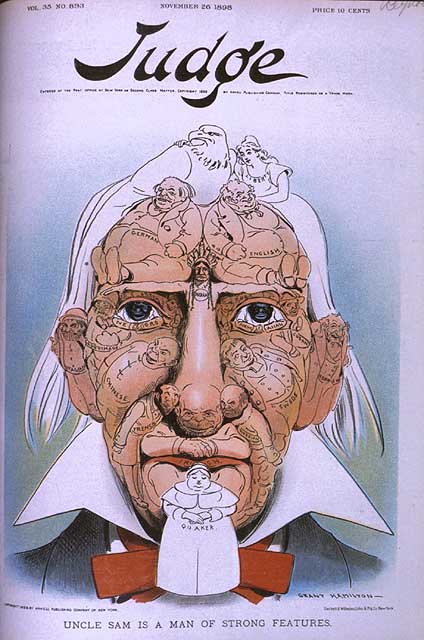Raphael Tufiño, Cortadores de Caña (Cane cutters) Linocut 21x29cm
Miguel Algarin, "Latero Story" Questions:
Language/Style:
Miguel Algarin intentionally uses explicit technical language throughout the poem. He uses this explicit use of explicit language with a complete abandon of standard syntax. (he refuses both punctuation and capitalization) I have two questions about this stylistic choice.
1.What is the purpose of his coupling of complex multisyllabic words with lack of formal grammar. (ex. dry blood infectious diseases/ hypothermic needles tissued/heroin water drops pilfered in/ slimy greases hazardous waste materials)
2. How does this form, relate to his interpretation of american success and entrepreneurialism.
Aurora Levins Morales, "Child of the Americas" Questions:
Diction:
Aurora Levins Morales uses many racial/ethnic identifiers. Many of these identifiers are the compilation of one or more ethnic groups which are commonly considered distinct from one another.
1.What is Aurora Levins Morales trying to say about the nature of ethnicity,nationality and race through the use of these compilations? (ex. mestiza,U.S. puerto rican jew, Latinoamerica.)
2. Also what are these labels saying about the nature of diaspora, and the movement of peoples in an increasingly globalized world.
Pedro Pietri, "Puerto Rican Obituary" Questions
Style:
1.This poem is dominated by short declarative sentences. What effect is achieved by this stylistic choice?
2.Pedro Pietri constantly repeats phrases and lines throughout his poem. What is the effect of this repetition?
3. How do these two stylistic choices mirror Pietri's understanding of the lives and deaths of Puerto Rican workers?
Content:
1. Pietri is suggesting a relationship between numbers (financial and other wise) and the names of puerto rican immigrants. What relationship do you think Pietri is suggesting?

2.1.What is Aurora Levins Morales trying to say about the nature of ethnicity,nationality and race through the use of these compilations? (ex. mestiza,U.S. puerto rican jew, Latinoamerica.)
ReplyDeleteMorales' poem conveys the mutability of race/ethnicity. She tries to illustrate the triviality of it, in that it is so readily subject to change and alteration; but, conversely, she also illustrates its importance as a point of origin, a place to which all of our cultural roots can be traced back to. She views heritage as a venerable truth, deserving of remembrance and respect, but she does not view it as a defining one. In compiling this list of various ethnicities, she is simultaneously proclaiming her unwillingness to align herself with one ethnic group, along with her unwillingness to believe that such an alignment is even necessary, thereby, asserting that while her roots can be traced back to varying points of origin, those various roots ultimately coalesce into one new, whole being.
I think in coupling the technical language with the lack of formal grammar Miguel Algarin creates a tie between the public image and the self image of the latero. In the public eye, the latero can be viewed as an uneducated individual, sharing with other immigrants the dream of finding success in America. This lack of education is characterized in Algarin's rejection of formal grammar. Without grammatical rule he creates the illusion that the latero's naivety is more than skin deep. It is then, through technical language, we are able to see that the latero is really a sensible character, understanding that any dreams of his success are farfetched. The complex language gives the reader a deeper understanding of the latero's routine, digging through hazardous materials, aware of the unlikeliness of his sarcastic hopes and dreams. This form relates to his view of entrepreneurialism and success in that he is able to see through the grand facade of the American dream while humoring himself and the reader with sarcastic aspirations.
ReplyDeletePedro Pietri
ReplyDeleteThe short declarative sentences are seen as a constant hammering of the statement that is being made, leaving no room for argument because the writer is stating very simply that the repetitious lifestyles of immigrants are killing them. Mind you, the reader has to go through the repetitions just as much as the workers did, just mentally. Every time "they worked, they worked, they worked" is repeated, you can literally feel the vapidness of the statement "they worked" and perhaps it was the author's intention to sort of 'kill' the reader in a metaphorical sense by repeating phrase after phrase. (Just like that)
Repetition in writing is a very interesting phenomena since it makes the readers question either out of frustration or curiosity, why the heck would the writer write something over and over again? It is because it gives depth to the meaning of the words, extra layers to peel back and ruminate over. We begin to question the statement, 'they worked', with "what kind of work did they do?", "where did they work?", "why are they working so much?", "who are they working for?" and on and on.
The conditions of immigrant workers are never questioned and Pietri is getting the reader actively involved in the questioning and possibly, caring of the immigrant workers' well being. He forces you to think about how hard they work and then..he reveals. They died, waiting for lotto tickets and working for cars and all sorts of American success dreams which never comes true for the immigrants.
Yet, we delve deeper into questioning if the american success story is an unfortunate fib told to these puerto ricans and immigrants and ultimately causing their desires to go unfulfilled and into a grave.